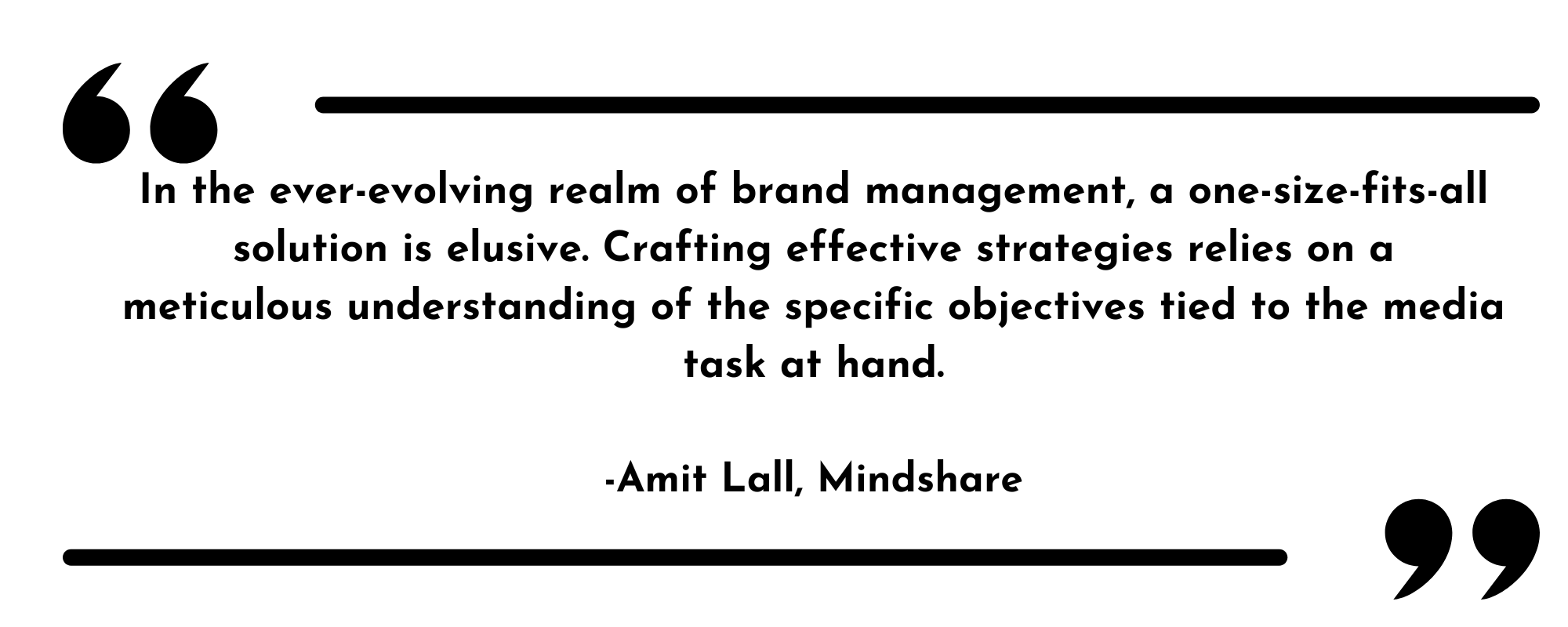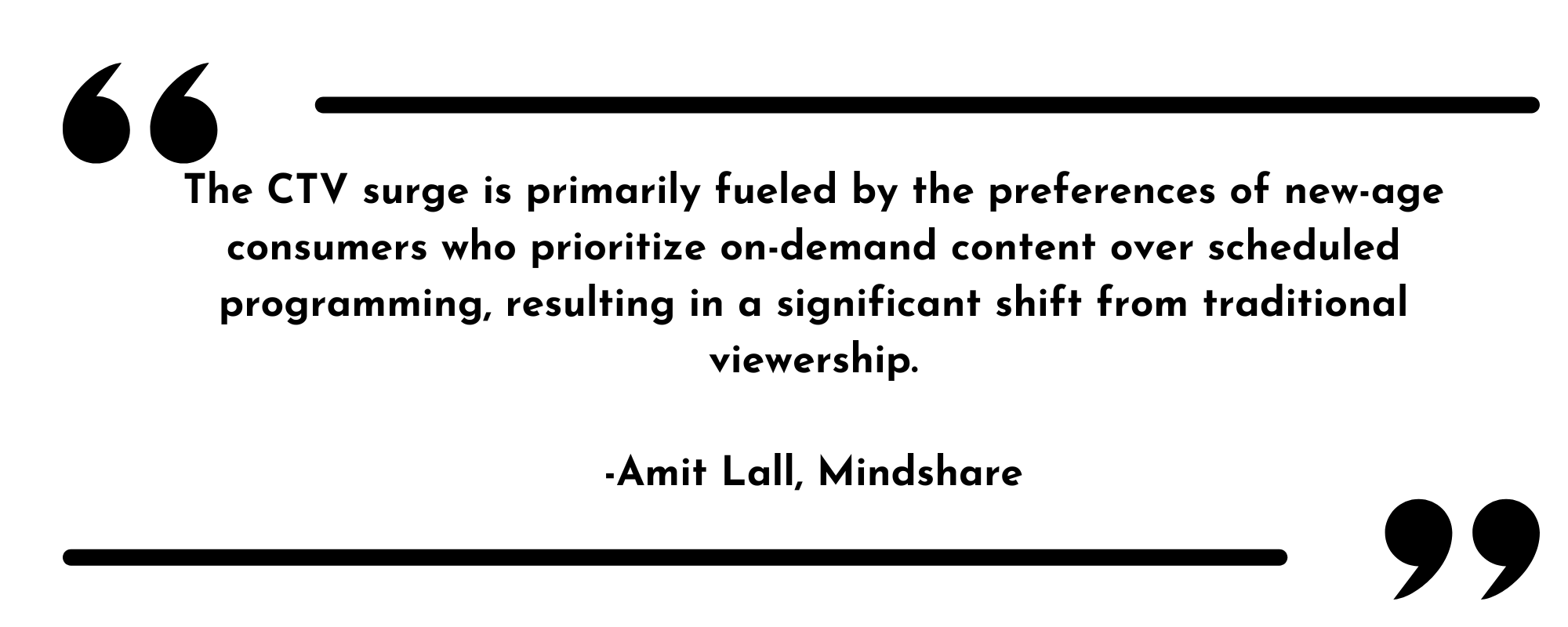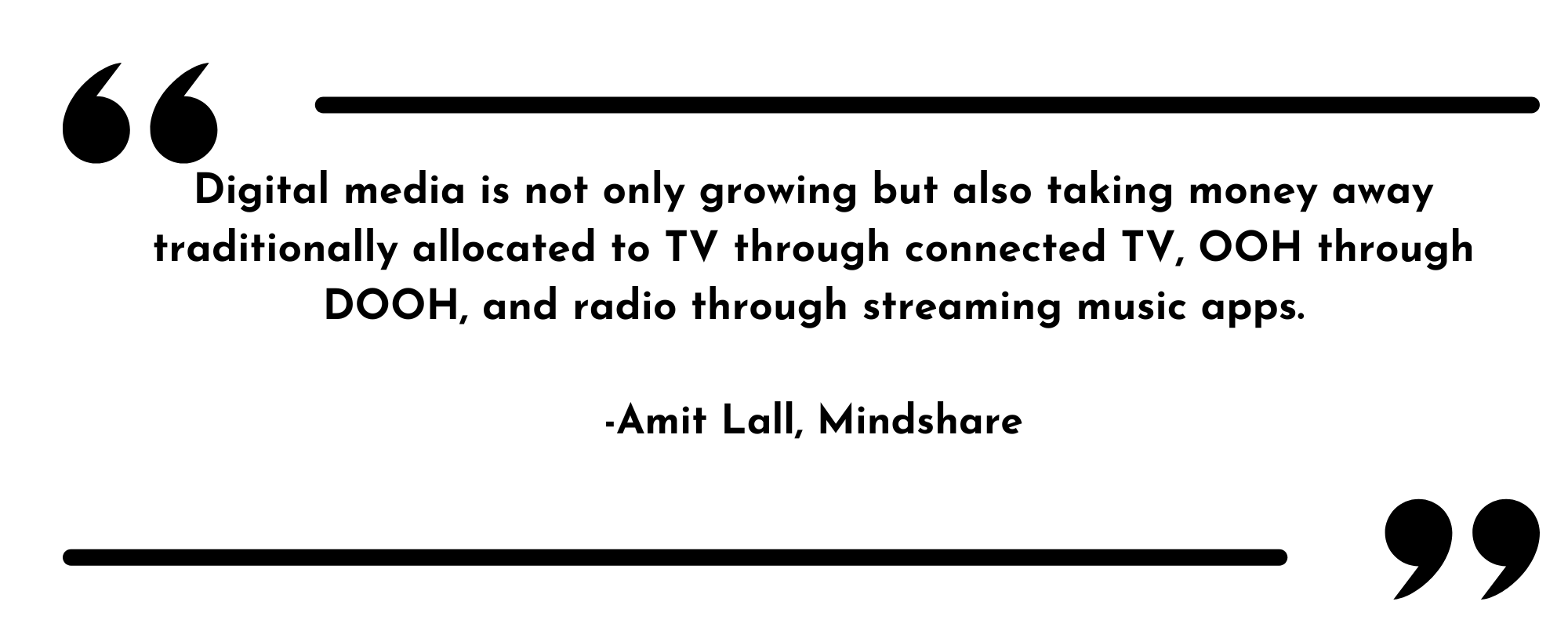In Conversation with Mindshare’s Amit Lall: Mastering Digital Dynamics
Amit Lall, Principal Partner at Mindshare, brings two decades of expertise in telecom, technology, and digital planning. He oversees digital strategies for diverse sectors, prioritizing consumer-centric solutions powered by data.
In this exclusive interview, his insights will unveil the evolving media landscape, technological adaptations, and future trends, offering readers a glimpse into transformative digital initiatives propelling clients to sustainable success.
As an accomplished expert with over two decades of experience in this industry, can you walk us through your background and your experience working as the Principal Partner / Digital Lead – Client Leadership at Mindshare?
Mobile and technology have been my lifelong passions. I embarked on my professional journey with the telecom industry, initially in sales and later transitioning into product management, eventually finding my way into the realm of digital planning. This path has been characterised by a multitude of highs and lows, each contributing to my growth. Presently, I serve as a Principal Partner at Mindshare, where I oversee digital for West 1 cluster. The continually evolving digital landscape, coupled with the increasing influence of cutting-edge technologies like AI and ML, ensures that my work remains both exhilarating and challenging.
A wide range of clients come under your wing, from Fintech to Telecom to Fashion. How do ensure that the strategies employed for these sectors resonate with the specific audiences? Are there different digital strategies for each of them and if so, how do they differ from each other?
In the ever-evolving realm of brand management, a one-size-fits-all solution is elusive. Crafting effective strategies relies on a meticulous understanding of the specific objectives tied to the media task at hand. Our approach is tailored to align with the unique goals each brand aspires to achieve. Throughout the formulation process, we prioritize understanding the brand’s position in the consumer funnel. Whether the brand is emerging, established, or grappling with low consumer consideration, recognizing the brand’s needs is vital. We require absolute clarity on these points before delving into the realm of solutioning.
Furthermore, comprehensive details on the brand, its category, and its competitive landscape are indispensable. The better we know your brand, the more refined our solutioning becomes. These insights play a pivotal role in shaping communication and deployment strategies. Our solutioning is focused on an an audience-first approach, supported by robust data, powerful insights, and compelling content. By addressing these critical questions and staying committed to an audience-centric approach, we ensure that our solutions are not just effective but also resonate with the core essence of the brand.

In the context of cutting-edge technologies such as Generative AI, Metaverse, and 5G, how have you prepared yourself to embrace them? How have they disrupted the advertising industry?
To be transparent, navigating the multitude of changes in the tech space, whether in Generative AI, the Metaverse, Blockchain, or Web 3.0, can indeed be challenging. However, working in the digital industry provides a unique advantage, offering exposure to numerous startups and tech enthusiasts. This exposure allows firsthand experiences with technologies and helps understand their true potential, which can be leveraged for user experience, engagement, and performance enhancement.
At Mindshare, we’ve always championed the ethos of leveraging technology and staying at the forefront for our clients. These cutting-edge technologies are seamlessly integrated into our tactical deployment strategies, contributing significantly to our client’s success by delighting their consumers. A testament to this commitment is our pioneering adoption of the Metaverse for clients in the auto and beverages categories. Additionally, we boast numerous success stories stemming from the strategic deployment of AI/ML tools, resulting in superior media outcomes that have played a pivotal role in driving growth for our clients.
Your 20 years of experience in this industry must have given you a unique perspective on the changes and evolution of this industry. Do you see any emerging trends? What preparations do you have in place to face them?
Over the past two decades, we’ve witnessed a remarkable transformation in the media landscape. What was once at the periphery of media choices is now inching towards dominating it. The sheer scale and technological advancements in the digital realm have not only propelled its growth but also led to a significant reshaping of budget allocations. Digital media is not only growing but also taking money away traditionally allocated to TV through connected TV, OOH through DOOH, and radio through streaming music apps.
With continuous push and support from the government, digital penetration is at an all-time high. This has translated into massive adoption of smartphones, complemented by cheap data plans to drive usage and high-speed connections across 4G and 5G networks for a superior experience. As these factors converge, we foresee our future trends being dominated by big query data, driven by the prowess of Generative AI and ML.
AI and ML are not only about automation and predictive analysis but also about multiple messaging or personalization at scale. The adoption of Connected TV (CTV) is poised to outpace growth projections at an accelerated pace. Furthermore, we anticipate that full-funnel deployment will become the new norm, as advertisers seek comprehensive strategies covering every stage of the consumer journey. Lastly, I believe retail media will continue its dominance, reflecting the evolving dynamics of consumer behavior and preferences.

Consumer viewership habits have also evolved over the period of time. What metrics and goals do you look to accomplish for CTV vs Mobile advertising? Can you throw some light on the CTV advertising landscape in India?
India’s CTV ecosystem is experiencing unprecedented growth, reaching 33 million households in July 2023, a substantial increase from the 11-12 million recorded in January 2022. Projections from the GroupM Finecast report suggest a trajectory toward 50-60 million households by the end of 2025. This surge is primarily fueled by the preferences of new-age consumers who prioritize on-demand content over scheduled programming, resulting in a significant shift from traditional viewership. The convenience of accessing content anytime, anywhere has prompted a surge in viewers cutting the cord and embracing CTV. For advertisers, the appeal lies in the larger screen and premium ad environment, translating to a more impactful reach, with key metrics centered around impressions, viewability, and overall reach.
Digital marketing is a rapidly evolving landscape in which, Programmatic digital out-of-home (pDOOH) seems to be the new trailblazer marketing strategy everyone wants to undertake. What are your thoughts on this?
Digital OOH has changed the role of the OOH medium. From just being a ‘reminder’ medium, DOOH has also made it a medium to enhance imagery. The OOH industry has historically grappled with challenges related to transparency and measurement. However, with the emergence of pDOOH, both of these concerns are being addressed. Unlike the static-only medium, pDOOH provides a plethora of options, allowing you to play with formats such as video, staticads, and GIFs, enabling sharper targeting, and in some cases, even retargeting your consumers. These possibilities make this medium more effective.

Have you ever run a marketing campaign that presented an unexpected challenge or outcome? How did you implement the lessons learned?
All campaigns are unique and designed with business objectives in mind. Based on the objectives, our solution isalways consumer-centric, powered by data. To drive engagement, we use dynamic creatives at scale, keeping the consumer’s journey in mind.
Any words of advice you would like to share with the young professionals about navigating through the ever-evolving marketing landscape?
My advice to young professionals is to stay curious and keep upskilling to adapt and stay relevant in the ever-changing media landscape.
Author Profile

- Neha Mehta
- Neha started her journey as a financial professional but soon realized her passion for writing and is now living her dreams as a content writer. Her goal is to enlighten the audience on various topics through her writing and in-depth research. She is geeky and friendly. When not busy writing, she is spending time with her little one or travelling.
Latest Posts
 Interview and Guest PostJuly 19, 2024Navigating Ad Tech: Equativ’s Jacqueline Chua’s Strategic Insights
Interview and Guest PostJuly 19, 2024Navigating Ad Tech: Equativ’s Jacqueline Chua’s Strategic Insights Interview and Guest PostJune 21, 2024CTV Exploration: Chandrahas Shetty, Demand Facilitation Lead, India, On Growth And Privacy
Interview and Guest PostJune 21, 2024CTV Exploration: Chandrahas Shetty, Demand Facilitation Lead, India, On Growth And Privacy Interview and Guest PostJune 14, 2024Advertising Evolution: Rasha El-Ghoussaini on Snap Inc.
Interview and Guest PostJune 14, 2024Advertising Evolution: Rasha El-Ghoussaini on Snap Inc. Interview and Guest PostJune 5, 2024Navigating Digital Waves: Shrenik Gandhi’s Journey with WRM
Interview and Guest PostJune 5, 2024Navigating Digital Waves: Shrenik Gandhi’s Journey with WRM










